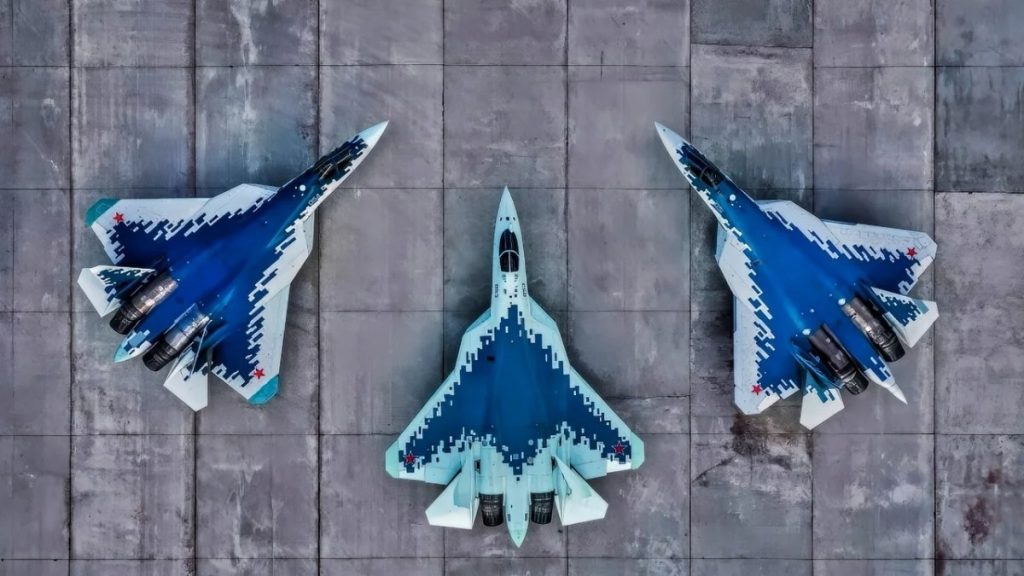
The Sukhoi Su-57 Felon was Russia’s highly touted fifth-generation stealth fighter proposal to the elite club—a game-changer aircraft to showcase Russian aerospace prowess and thwart America’s F-22 and F-35. Smooth sailing, however, has not been the path to the skies. Instead of a game-changer, the Su-57 has been beset with production concerns, setbacks, and doubts about its role in future air combat.

The project commenced in the early 2000s under the PAK FA program to design a multirole fighter that would control the skies, bomb ground targets, and conduct reconnaissance. The aircraft had a stealth design, composite material was heavy, hidden weapon bays, and advanced avionics.

Engineers designed the Su-57 to be highly maneuverable and equipped with high-tech systems that others referred to as an “electronic co-pilot.” Sensors placed all over the airframe were coded to recognize a threat from any direction. Artificial intelligence within their comms and data frames was meant to give pilots a leg up, enabling them to rapidly process battlefield data and react immediately in combat.

The aircraft is intimidating on paper. It can travel at a speed of over twice the speed of sound, fly over 2,000 miles without needing refueling, and launch guided and hypersonic missiles. It can view several targets simultaneously with its sensors, and its AI can be trained by success in a mission and identify patterns. The Su-57’s angular shape, radar-absorbing paint, and partially armored engines are all designed to lower its radar signature, especially under frontal attack.

In theory, at least, the program has not worked. Western sanctions have deprived it of the essential components, including sophisticated electronics and stealth materials, and the radar system, built based on German work, has fared particularly badly, and it has been difficult to replace them adequately.

Few Su-57s are therefore operational. Some 22 aircraft had been delivered, divided between testing and production quantities, by 2024. Aggressive delivery schedules, therefore, seem impossible. Each aircraft is costly and technologically invaluable, and losses are therefore particularly expensive. When one was lost over Astrakhan, it put into perspective the difficulty of replacing such sophisticated equipment. Meanwhile, Russia still manufactures proven fighters such as the Su-30SM2 and Su-35S to maintain combat capability.

Practically, the Su-57 has had little chance to fight in Ukraine. Russia has not been eager to risk such expensive aircraft in disputed airspace, instead maintaining technology and face. Less advanced, older aircraft are more plentiful, less expensive to replace, and therefore more convenient for deployment on the front lines.

Foreign sales have been slow. Algeria was the first to buy abroad, ordering six Su-57Es and having them train pilots in Russia. Other purchases collapsed, such as India, which canceled in 2018 over stealth and electronics issues. Blatant flaws in airshows and ongoing suspicion about production quality have also damaged the fighter’s reputation.

In comparison to Western rivals, Su-57 vulnerabilities are astronomical. America alone has over a thousand F-35s in the skies, supported by colossus infrastructure and strict quality control. The F-22 and F-35 stealth fighters are veteran combatants with combat flight hours.

As much as the Su-57 is touted to be a champ at combat operations against advanced air defense systems, experts will rather imagine the Su-57 still in the development stage in terms of stealth and flight capabilities.

Despite all these problems, the Su-57 is at the forefront of Russia’s military plans for the future. The Kremlin views it as a national technological symbol. Sanctions, production problems, and limited, restricted deployment turn the fighter aircraft into a prestige project instead of a game-changer. Least of all, short term, the Su-57 still fails to make waves on the international front.


